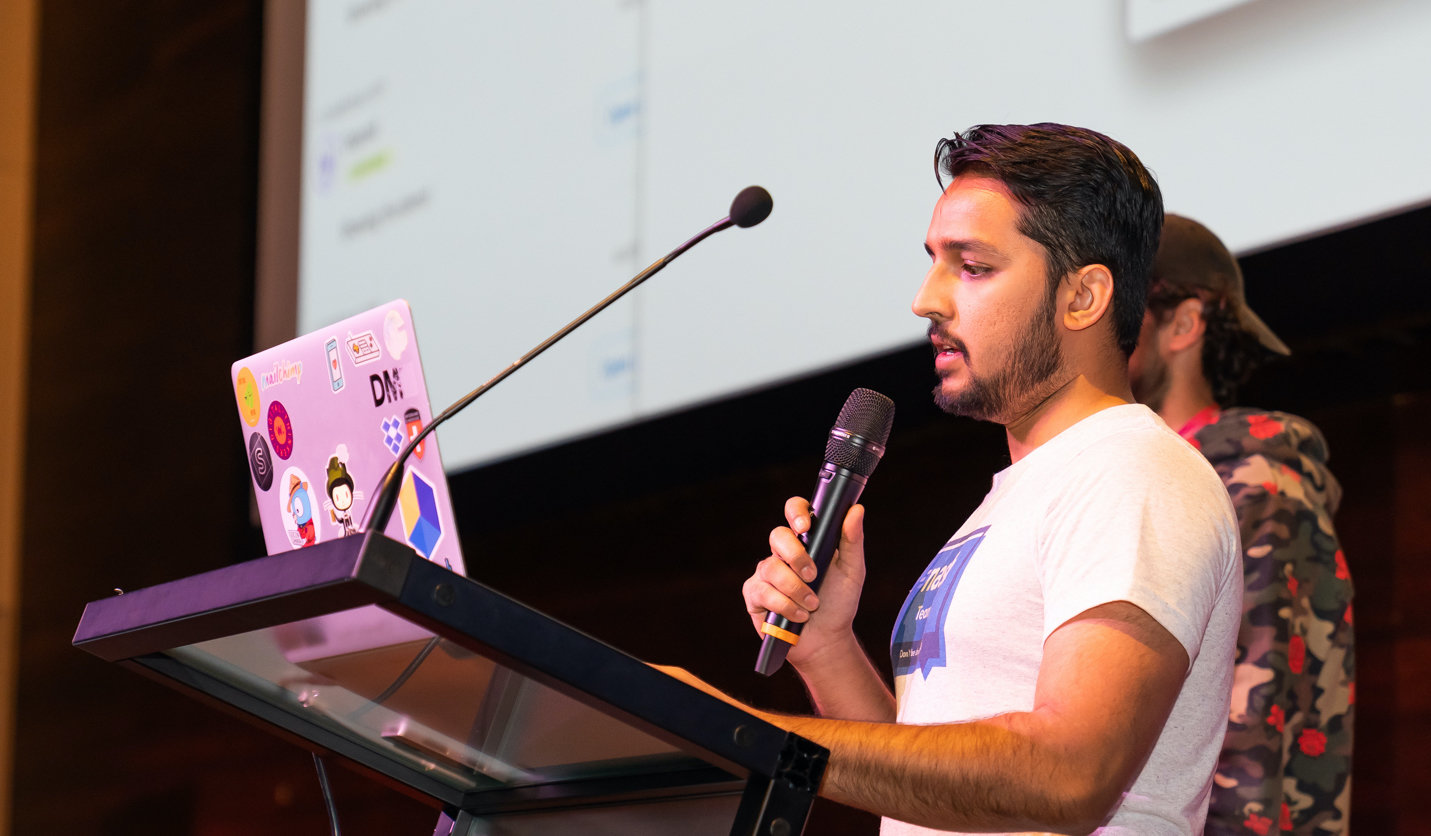NFT
April 2021
Amsul
twitter.com/amsul_
New Fomo Trend?
Bitcoiner • Educator • Developer • Designer

About me
Terminology
Demystify NFTs
Pros & cons
Use cases
Frequently asked
Future potentials
OUTLINE
Terminology
Blockchain
A way to store data that enables digital scarcity and ownership without relying on a central authority.
TERMINOLOGY
The first application of this was digital gold: Bitcoin.
On-chain / Off-chain
Data stored on a blockchain is called on-chain data.
TERMINOLOGY
On-chain data entries cannot be changed or deleted. Only new entries can be added.
Adding new on-chain data is slow by design and expensive for large amounts of data.
Demystify NFTs
Non-fungible tokens
Tokens: assets issued and traded on blockchains.
DEMESTIFY NFTs
Fungible: units that are indistinguishable.
For example, all $1 notes have the same purchasing power regardless of being crisp or worn down.
Non-fungible: units that are distinguishable.
For example, every cat is different from other cats regardless of how similar they may look.
Put together...
Non-fungible tokens are individually unique (or scarce) units that are issued and traded on blockchains.
DEMESTIFY NFTs
Why non-fungability?
Almost everything we love and own is non-fungible. For example homes, art, collectibles, etc.
DEMESTIFY NFTs
NFTs make way for non-financial applications of blockchains, such as art, media, and games.
Digital era ownership
In the modern digital era, everyone is a renter.
DEMESTIFY NFTs
You don’t buy music or movies - you buy temporary access from a gatekeeper.
They give you permission, so they dictate the rules.
NFT era ownership
In an NFT-enabled digital era, content can truly be owned by consumers. *
DEMESTIFY NFTs
Anyone can be a creator or distributor without requiring permission to enter the marketplace.
* With some important caveats.
Pros & cons
Pros
- Enables ownership of digital assets without a central authority that dictates and leeches.
- Lowers barriers of entry to traditionally “exclusionary” marketplaces.
- Enables new consumer models by involving them as part of the media.
- Enables new community paradigms around engagement and empowerment.
- Enables new streams of revenue for creators.
PROs & CONs
Cons*
- Not truly scarce.
Scarcity depends on issuer integrity. - Ownership is not strictly tied to the asset.
More like an autograph than the thing itself. - Only the on-chain data is truly “owned”.
- Legal enforcement of ownership & rights is questionable.
- Elements of trust in a central authority.
Off-chain data can be easily lost forever. - Early stage experiment.
PROs & CONs
* Not all NFTs are created equal.
Use cases
USE CASES
Types of NFTs
Digital goods
Ownership of data entries.
Digital media
Ownership of creative digital art.
Digital certificates
Ownership of physical goods.
Domain names, tickets, etc.
Pictures, audio, video, in-game items, virtual real estate, collectibles, etc.
Entitlements, real estate, etc.
USE CASES
“Truthfulness” of NFTs
Digital goods: GREAT!
All data can be committed on-chain.
Digital media: GOOD
Metadata can be committed on-chain.
Media is stored off-chain. *
Digital certificates: BAD
Regardless of any data being on-chain, it requires law enforcement and physical coercion to administer.
* Potential for improvement with IPFS and other innovations.
USE CASES
Examples today
- Collectibles (fan loyalty)
- NBA Top Shot: videographic trading cards
- CryptoKitties: breed unique cats
- Games
- Skyweaver: card game
- Decentraland: virtual world
- CryptoKitties: games in the KittyVerse
-
Domain names
- ENS: named addresses for Ethereum
USE CASES
Examples today
-
Communities/memes
- CryptoPunks
- NyanCat
- Art
- Beeple
- Habibi
- Any internet content
- Tweets
- Blog posts
- Images/GIFs
Frequently asked
FREQUENTLY ASKED
What are my ownership rights?
When you own a digital good NFT, you have full control over the asset.
When you own any other type of NFT, all you really own is an autograph.
Issuers can establish IP rights, commercial rights, copy rights, etc. prior to sale, but no legal precedence of enforcement and no guarantees of data permanence.
FREQUENTLY ASKED
Why are people paying millions for image files that are available for free?
Value for art is subjective - everyone has their own reasoning for buying art (collecting, investing, commercializing, etc).
People aren’t really buying the art, but the rights that come with the NFT.

NFT art value curve looks like this 👉
FREQUENTLY ASKED
Don’t NFTs have significant energy consumption?
NFTs don’t have any impactful energy consumption when issuing or trading them. That’s not how blockchains work.
Blockchains do consume notable amounts of energy. But that energy is used to produce something of immense value: decentralized digital ownership.
Regardless, several blockchains are moving to more energy efficient systems as well as greener energy sources.
Future potentials
FUTURE POTENTIALS
Enter mainstream
- Growing non-financial applications of blockchains.
- New royalty streams for creators of digital media.
- Ticketing systems for virtual & physical access.
- In-game capabilities (power-ups, weapons, skins).
- Fandom collectibles.
FUTURE POTENTIALS
Legal landscape
Ownership rights of NFTs will be clarified.
Certifications for physical goods will be issued.
Fractional ownership will be more widespread.
FUTURE POTENTIALS
Final thoughts
Purchasing and using NFTs is not particularly about “investing” or making money.
NFTs create a new avenue for creative expression, ownership, and rights within a digital realm.
Useful links
Marketplaces
- Foundation: foundation.app
- SuperRare: superrare.co
- Rarible: rarible.com
- OpenSea: opensea.io
Domains
- ENS: ens.domains
Learn more

Follow me for more info
Thanks for listening!
NFT
By amsul
NFT
- 138



